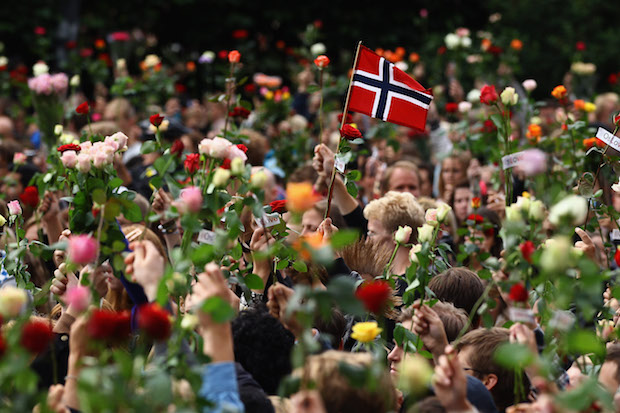Anders Behring Breivik – the Norwegian extremist who killed 77 people in 2011 – has for the last few days been involved in a human rights trial in his prison in the south of Norway. Many would argue that, for a person in jail, he has a fairly cushy life – particularly given his crime. He is allowed to play video games, read newspapers and have access to a computer, and also has access to three cells, as well as an outside area. He has also been allowed to take university courses at the country’s main university, the University of Oslo, and took part in the prison’s Christmas gingerbread-baking competition. He is not, however, allowed to communicate with other prisoners, and his letters are all monitored and censored.
So what more does he want? Well, quite a lot, it would seem. Breivik is trying to sue Norway, claiming that his isolation contravenes his human rights, under the European Convention on Human Rights. There are two articles that he claims are being contravened: Article 3: Prohibition of torture (he is alleging inhuman or degrading treatment, rather than torture), and Article 8: Right to respect for private and family life.
Norwegians are, for the most part, compassionate, sensible, and tolerant people. The vast majority of them want to treat people well – and most of the time they do. But the case of Anders Breivik is one that has left them confounded. The one thing that they don’t want is for him to be allowed a platform on which to air his views and spread his opinions – and this is what they worry may happen if he wins his case.
What I find strangest about this whole thing is Breivik’s claim that he wants company. By all accounts, he was very much a loner in the years leading up to the event in 2011. Åsne Seierstad’s excellent book, One of Us, tells how between 2006 and 2011 Breivik spent the vast majority of his time locked away in his bedroom in his mother’s house, either chatting on white supremacist forums, playing war games on his computer, or writing the ‘manifesto’ that he emailed to thousands of contacts on the day of the attack. He rarely went outside, and sometimes even covered his face when moving between the rooms of his mother’s house so that she couldn’t see him. In the months leading up to the summer of 2011 he rented a farm where he went about making his bombs – again, almost completely alone.
Breivik is hardly a sociable creature. So why is he asking for this now? Is he engineering this case simply to remind the world that he still exists? It could well be the case. His lawyers have already acknowledged that people might think this, saying: ‘This case is not, as many believe, a case being run in order to get Breivik back into the limelight’. Is that true? It’s well known that Breivik is an attention seeker; he has been criticised this week by the state lawyers, for example, for making a Nazi salute, and prior to his first court case he asked to appear wearing ‘uniform’. But whether or not he is doing this simply for attention, the case has certainly opened up emotional wounds for many Norwegians. The attack might have happened almost five years ago – but they are far from healed, particularly for survivors, and for the families of those who died that day.







Comments